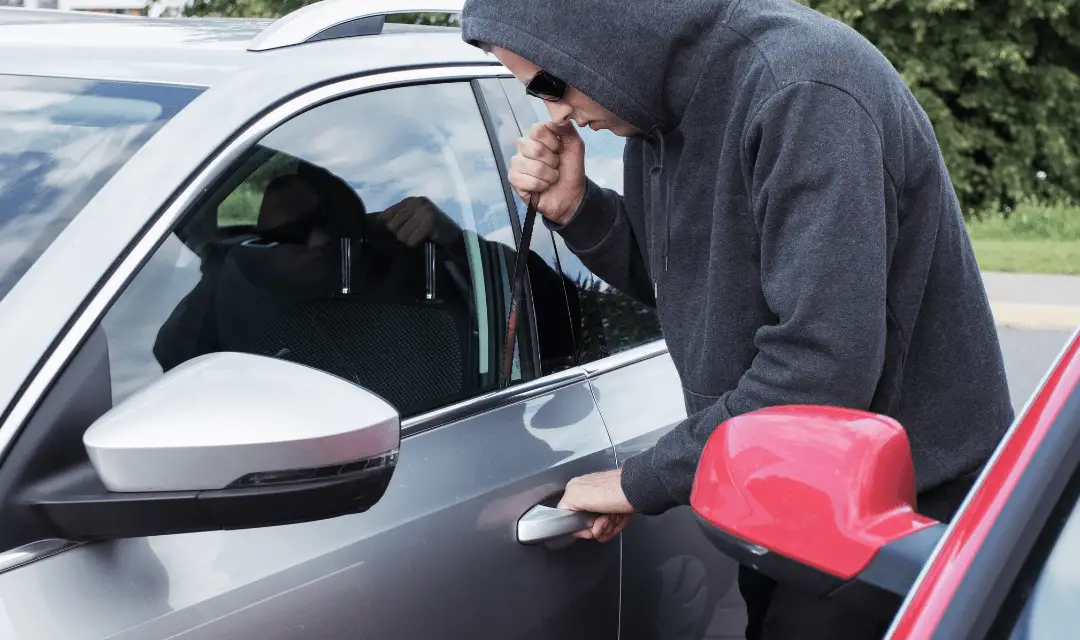Critical Analysis: Anti-Carnapping Law and Theft of a Motor Vehicle
Carnapping is one of the crimes that our government is trying to eliminate. The crime rate for carnapping in the Philippines is serious. Nonetheless, with the enactment of an Anti-Carnapping Law by the Philippine Congress and implementation of our law enforcement groups, particularly the Philippine National Police-Highway Patrol Group, which is tasked to enforce the said law, our country is on its way to eradicate this crime with stricter and harsher penalties and rules.
In our jurisdiction, the Revised Penal Code and several Special Penal Laws are among the sources of criminal liability a person may incur whether through his act or by his omission.
Supposed that Juan owns a car and he parked it outside their garage and the next day the car was stolen. On the other hand, Pedro is an operator of a taxi unit and he has Mario to drive the same; however, Mario did not bring back the taxi unit to the pool. Question: Were the crimes in separate instances committed identical? Or are they separate and distinct from each other? The author shall discuss the answer in the succeeding topics below.
The topic we are about to discuss is about the two acts which appears to be punished separately and distinctly, one under the Revised Penal Code and the other, by a Special Penal Law.
Theft of a Motor Vehicle, which is deemed qualified under the Revised Penal Code, and Anti-Carnapping Law
Both are criminal offenses but are punished by two different criminal laws. As codified in the Revised Penal Code, Art. 310 punishes the crime of qualified theft of a motor vehicle. Conversely, carnapping is penalized under Republic Act No. 6539, as amended by Republic Act No. 10883.
It is true, the Anti-Carnapping law is a special penal law which is different from the crimes of Robbery and Theft under the Revised Penal Code. The distinction between the two crimes will be extensively discussed in seriatim.
For purposes of discussion and to understand thoroughly what carnapping is, the author would want to expound what vehicles are subject to this law.
As provided under Section 2(e)1 of Republic Act No. 10883, motor vehicles are those:
“propelled by any power other than muscular power using the public highways, except road rollers, trolley cars, street sweepers, sprinklers, lawn mowers, bulldozers, graders, forklifts, amphibian trucks, and cranes if not used on public highways; vehicles which run only on rails or tracks; and tractors, trailers and traction engines of all kinds used exclusively for agricultural purposes. Trailers having any number of wheels, when propelled or intended to be propelled by attachment to a motor vehicle, shall be classified as a separate motor vehicle with no power rating.”2
Take note that in Anti-Carnapping Law, what is punished is the unlawful taking of a motor vehicle, and not all classes of vehicle.
As defined in Oxford Dictionary, a vehicle3 is a thing that is used for transporting people or goods from one place to another, such as a car or lorry. In this law, it is expressly stated that what is punished is the unlawful taking of a motor vehicle only.
Let’s say that if Juan steals from Pedro his Bianchi Road Bicycle which he uses as his mode of transportation, the crime would only be robbery or theft, as the case may be, and not to carnapping as the road bike. Although classified as a vehicle used to transport people, it is propelled by muscular power and not by an engine.
Carnapping Law in the Philippines | Brief take
In 1972, the first Anti-Carnapping law was passed by the Philippine Legislature or Republic Act [RA] No. 6539.
In the said law, carnapping was defined as the “taking, with intent to gain, of a motor vehicle belonging to another without the latter’s consent, or by means of violence against or intimidation of persons, or by using force upon things.”4
Until in 2016, when a new anti carnapping law was passed or RA 10883 5, which is way stricter, increased the length of penalty of imprisonment as compared to the old law, RA 6539 has been the effective Special Penal Law that criminalized and penalized carnapping.
Senator Grace Poe, who is the principal author in the Senate has expressed her high hopes in the passing of the said measure (RA 10883) to eradicate the crime and give vehicle owners peace of mind.
“It is our hope that this new and comprehensive anti-carnapping law imposing much stiffer penalties, alongside strict implementation by our law enforcers, will hinder the commission of this crime and give vehicle owners peace of mind,” as she said in a separate statement.6
From imprisonment of “not less than fourteen (14) years and eight (8) months to not more than seventeen (17) years and four (4) months”,7 a person who will be found guilty of carnapping, irrespective of the value of the motor vehicle taken if the taking is committed without violence or intimidation of persons or force upon things, will suffer.
Under the new law, a penalty of “imprisonment for not less than twenty (20) years and one (1) day but not more than thirty (30) years.”8 The penalty has been increased. Hence, this is more punitive than its predecessor.
If the carnapping is committed by means of violence against or intimidation of persons, or force upon things the guilty person is bound to suffer the penalty of “imprisonment for not less than thirty (30) years and one (1) day but not more than forty (40) years,”9 as compared with the old law which only imposed “imprisonment for not less than seventeen years and four months and not more than thirty years.”10
Further, in the new anti-carnapping law, life imprisonment is the penalty when the owner, driver, or occupant of the carnapped motor vehicle is killed or raped in the commission of the said crime.11 In addition, take note that in the new law, raping the car-owner now qualifies the crime of carnapping.12
Further, both in the old and new anti-carnapping laws, any public official is penalized if he “directly commits the unlawful acts defined in this Act or is guilty of gross negligence of duty or connives with or permits the commission of any of the said unlawful acts shall, in addition to the penalty prescribed in the preceding paragraph, be dismissed from the service, and his/her benefits forfeited and shall be permanently disqualified from holding public office.”13
Moreover, the sale of second hand spare parts which are taken from a stolen or carnapped vehicle.14 The crime would have been a violation of Anti-Fencing Law if it were not defined and penalized in this Special Penal Law.
Difference between Carnapping and Theft of a Motor Vehicle
Carnapping and Qualified Theft of a Motor Vehicle can be deduced to a similar definition – it is an act of stealing a vehicle. In this regard, both crimes are often misapplied by laymen and law students as well.
After all, it involves almost the same elements, and it involves a motor vehicle. Therefore, it is within the context of stealing, etc.
So, to clearly define the line between a Carnapping incident and a Qualified Theft of a Motor Vehicle incident, we have to look into the difference between the two crimes as to its nature and as to its penalty.
As to Nature
In essence, both crimes really do not differ from each other. In fact, in People of the Philippines vs. Bustinera,15 the Supreme Court declared that the law covering Carnapping offenses and Qualified Theft of Motor Vehicle, are in pari material (“same subject matter”).
In City of Naga vs. Agna16, the Supreme Court declared that:
“In construing them the old statutes relating to the same subject matter should be compared with the new provisions and if possible by reasonable construction, both should be so construed that effect may be given to every provision of each.”17
In People of the Philippines vs. Tan18 and People vs. Lobitania19 the Supreme Court clarified that the unlawful taking of motor vehicles is now covered by the anti-carnapping law and not by the provisions on qualified theft or robbery.
Although the law applied in the above-mentioned cases is different from the currently effective law, which is R.A. 10883, the same concepts and context still applies.
It must be noted that the special law did not include in its coverage certain vehicles such as:
- roadrollers,
- trolleys,
- street-sweepers,
- sprinklers,
- lawn mowers,
- amphibian trucks and cranes if not used on public highways,
- vehicles which run only on rails and tracks, and
- tractors, trailers and tractor engines of all kinds and used exclusively for agricultural purposes.
Hence, in cases where there is unlawful taking of such vehicles, the provisions under Qualified Theft of a Motor Vehicle shall be applied.
As to Penalty
R.A. 10883 stipulates different period of penalties for different kinds of violation, as stated under the same law, which are:
- Carnapping without violence against or intimidation of persons – imprisonment for not less than twenty (20) years and one (1) day but not more than thirty (30) years (Sec. 3, R.A. 10883);
- Carnapping with violence against or intimidation of persons – imprisonment for not less than thirty (30) years and one (1) day but not more than forty (40) years, when the carnapping is committed by means of violence against or intimidation of persons, or force upon things (Sec. 3, R.A. 10883);
- Carnapping resulting to death or that the owner, driver, or occupant of motor vehicle is raped – life imprisonment (Sec. 3, R.A. 10883);
- Concealment of Carnapping – imprisonment of six (6) years up to twelve (12) years and a fine equal to the amount of the acquisition cost of the motor vehicle, motor vehicle engine, or any other part involved in the violation.
On the other hand, the penalty for Qualified Theft of Motor Vehicle depends on the amount of the motor vehicle vis-à-vis Article 309 of the Revised Penal Code. For Qualified Theft of Motor Vehicle, the law specifically states that:
“Article 310. Qualified theft.– The crime of theft shall be punished by the penalties next higher by two degrees than those respectively specified in the next preceding article . . .”20 The next preceding article pertains to the provision of Simple Theft.
Hence, both crimes have different set of penalties attached to each specific kind of violation, albeit Anti-carnapping law is more specific in classifying different kinds of violation.
Qualified Theft under the Revised Penal Code
As previously discussed, the unlawful taking of a motor vehicle may be penalized by a Special Penal Law, which is RA 10883 or the Anti-Carnapping Law of 2016, or under Art. 310 of the Revised Penal Code or Qualified Theft of a motor vehicle.
Jurisprudence provides the following elements of Qualified Theft, to wit:
1) That there is taking of personal property;
2) That the said property belongs to another;
3) That the said taking be done with intent to gain;
4) That it be done without the owner’s consent;
5) That it be accomplished without the use of violence or intimidation against persons, nor of force upon things;
6) That it be done with grave abuse of confidence.21
It can be gleaned from the above-mentioned elements that for a person to be convicted of Qualified Theft of a Motor Vehicle under Art. 310 the Revised Penal Code, the unlawful taking thereof must be committed without the use of violence or intimidation against persons, nor of force upon things and done with grave abuse of confidence, unlike in the Anti-Carnapping Law of 2016, where certain situations in the commission of carnapping may be attended with violence or intimidation of persons or force upon things.
Further, in Qualified Theft of a Motor Vehicle under Art. 310 of the Revised Penal Code, the abuse of confidence must be grave.
In the old case of People vs. Koc Song, 22 as cited in People vs. Puig23 the Supreme Court held that “there must be allegation in the information and proof of a relation, by reason of dependence, guardianship, or vigilance, between the accused and the offended party that has created a high degree of confidence between them, which the accused abused.24
However, if the car is stolen without committing any act with grave abuse of confidence, the crime falls within the purview of the Anti-Carnapping Law and not only simple theft or robbery.
When is carnapping qualified?
Carnapping becomes qualified when, in the course of the commission or on the occasion of the carnapping, the owner, driver or occupant is killed or raped.
The court ruled in People vs. Mejia that the killing or the rape merely qualifies the crime of carnapping and no distinction must be made between homicide and murder. Whether it is one or the other which is committed “in the course of carnapping or on the occasion thereof’ makes no difference insofar as the penalty is concerned.
Is carnapping with homicide a special complex crime?
Based on the People vs. Arcenal y Aguilan25, carnapping with homicide is a special complex crime if the elements of carnapping are present —where the elements of carnapping are:
1) There is an actual taking of vehicle;26
2) The vehicle belongs to a person other than the offender himself;27
3)The taking is without the consent of the owner thereof; or that the taking was committed by means of violence against or intimidation of persons, or by using force upon things; and28
4) The offender intends to gain from the taking of the vehicle.29
The most important thing in mind is that the original criminal design of the perpetrator and the killing was perpetrated in the course of the commission of the carnapping or on the occasion thereof.
It is similar to the special complex crime of robbery with homicide and in People vs. Bariquit30, it was ruled that:
In the present case, the accused-appellants were charged with, tried, and convicted for the crime of robbery with homicide. In our jurisdiction, this special complex crime is primarily classified as a crime against property and not against persons, homicide being a mere incident of the robbery with the latter being the main purpose and object of the criminal. Under Article 14 of the Revised Penal Code, treachery is applicable only to crimes against persons. Accordingly, inasmuch as robbery with homicide is a crime against property and not against persons, cannot treachery be validly considered in the present case.31
Under the last clause of Section 14 of the R.A. No. 6539, as amended, the prosecution has to prove the essential requisites of carnapping and of the homicide or murder of the victim, and more importantly, it must show that the original criminal design of the culprit was carnapping and that the killing was perpetrated “in the course of the commission of the carnapping or on the occasion thereof.”32
In other words, to prove the special complex crime of carnapping with homicide, there must be proof not only of the essential elements of carnapping, but also that it was the original criminal design of the culprit and the killing was perpetrated in the course of the commission of the carnapping or on the occasion thereof.33
The distinction between carnapping with homicide as special complex crime and carnapping which resulted of the victim as qualified is that there must be proof not only of the essential elements of carnapping, but also that it was the original criminal design of the culprit and the killing was perpetrated in the course of the commission of the carnapping or on the occasion thereof. This relies to the strength prosecution and the weight of evidence and witnesses.
Nevertheless, it must be noted that the Decisions which may have characterized carnapping as a special complex crime when attendant with killing or rape or both were promulgated when RA 6539 was still effective. The latter law adopted the nomenclature of penalties under the Revised Penal Code.
In RA 10883, the Revised Penal Code penalty nomenclature adopted in RA 6539 was not incorporated. The new law imposes a straight penalty. The highest being is life imprisonment.
Hence, it is of the author’s legal opinion that, when a carnapping happens and, on the occasion thereof, homicide, murder, and/or rape may have been committed, carnapping is considered qualified.
Is carnapping bailable?
When the owner, driver or occupant of the motor vehicle is killed or raped in the commission of this offense, the penalty shall be life imprisonment.
It is non-bailable if committed by criminal groups, or gangs or syndicates or by means of violence or intimidation of any person or persons or forced upon things; or when the owner, driver, passenger or occupant of the carnapped vehicle is killed or raped in the course of the carnapping when the evidence of guilt is strong.
Otherwise, short of the penalty of life imprisonment, the offense of carnapping is bailable. Thus, in the 2018 New Bail Bond Guide34 promulgated by the Department of Justice [DOJ], it provides that:
“NOW, THEREFORE, the following rules of computation shall be used in arriving at a uniform rate of bail, viz:35
“1. Where the penalty is Reclusion perpetua or life imprisonment, bail is not a matter of right; hence, “No Bail” shall be recommended;36
“x x x x
“4. For violations of special laws, bail shall be computed based on the maximum penalty imposable, the number of years in its maximum period multiplied by P6,000.00 except for the following laws, bail shall be computed based on the maximum penalty imposable, the number of years in its maximum period multiplied by P10,000.00 to wit:37
“x x x x . . . .
m. RA 10883 (New Anti Carnapping Act of 2016 (repealing RA 6539);38
“x x x x . . . .
Conclusion
Taking everything into account, Anti Carnapping law encapsulates violative acts that may relate to carnapping per se and defacing, or tampering with, repainting, and bodybuilding of certain vehicles which are stolen.
On the other hand, theft of a motor vehicle, prior to the special penal law on carnapping, was punishable under the Revised Penal Code as Qualified Theft, and it covers all types of vehicles that are powered by motor.
With the advent of Anti -Carnapping Law, as discussed, stealing motor vehicles, which are defined and enumerated in the aforesaid special law, shall now be punished as an act of carnapping and not anymore as qualified theft.
This serious crime of carnapping may need the assistance and coordination primarily with the Land Transportation [Commission] Office. This government agency is responsible for handling the “untaxed importation or coming from an illegal source or carnapped”.
This discussion also explains the elements of qualified theft which are which are similar with that of the Anti Carnapping Law and Qualified Theft of a motor vehicle, such as intent to gain and taking away of the vehicle without the consent or against the will of its owner.
Therefore, Theft of a Motor Vehicle under Article 310 of the Revised Penal Code and the Anti-Carnapping Law are in pari materia as both relate to the same subjects, specifically those covered vehicles under the special law.
Carnapping can be done with or without violence, force, or intimidation against others, and committed under the circumstances mentioned in Article 310 of the Revised Penal Code, yet, punishable under the special law.
When carnapping is attendant with violence, such as physical injuries, death, or rape, the same is considered qualified and will be meted with higher penalty.
Thus, this Anti-Carnapping Law seeks to protect the vehicle owners against individuals with sinister motives to rob the former of their vehicles, with or without force or violence.
- Section 2[e], RA 10883[↩]
- Id.[↩]
- Oxford Dictionary. Definition of “vehicle”[↩]
- Section 2, RA 6539[↩]
- The New Anti-Carnapping Law of the Philippines[↩]
- Senator Grace Poe’s Expression of Hopes[↩]
- Section 14, RA 6539[↩]
- Section 3, RA 10883[↩]
- Id.[↩]
- Section 14, RA 6539[↩]
- Section 3, RA 10883[↩]
- Id.[↩]
- Section 4, RA 10883[↩]
- Section 17, Id.[↩]
- G.R. No. 148233, June 8, 20404[↩]
- G.R. No. L-36049 May 31, 1976. 71 SCRA 176 [1976][↩]
- Ibid.[↩]
- G.R. No. 135904, January 21, 2000. 323 SCRA 30 [2000][↩]
- G.R. No. 142380. September 5, 2002. 388 SCRA 417 [2002][↩]
- Art. 310, Revised Penal Code[↩]
- People vs. Puig, G.R. No. 173654-765, August 28, 2008[↩]
- G.R. No. L-45043, August 28, 1936. 63 Phil. 369[↩]
- Supra., G.R. No. 173654-765, August 28, 2008[↩]
- Ibid., G.R. No. L-45043, August 28, 1936[↩]
- G.R. No. 216015, March 27, 2017[↩]
- Id.[↩]
- Id.[↩]
- Id.[↩]
- Id.[↩]
- G.R. No. 122733. October 2, 2000[↩]
- Ibid.[↩]
- People vs. Macaranas, G.R. No. 226846, June 21, 2017[↩]
- Ibid.[↩]
- DOJ 2018 Bail Bond Guide[↩]
- Id.[↩]
- Id.[↩]
- Id.[↩]
- Id.[↩]




